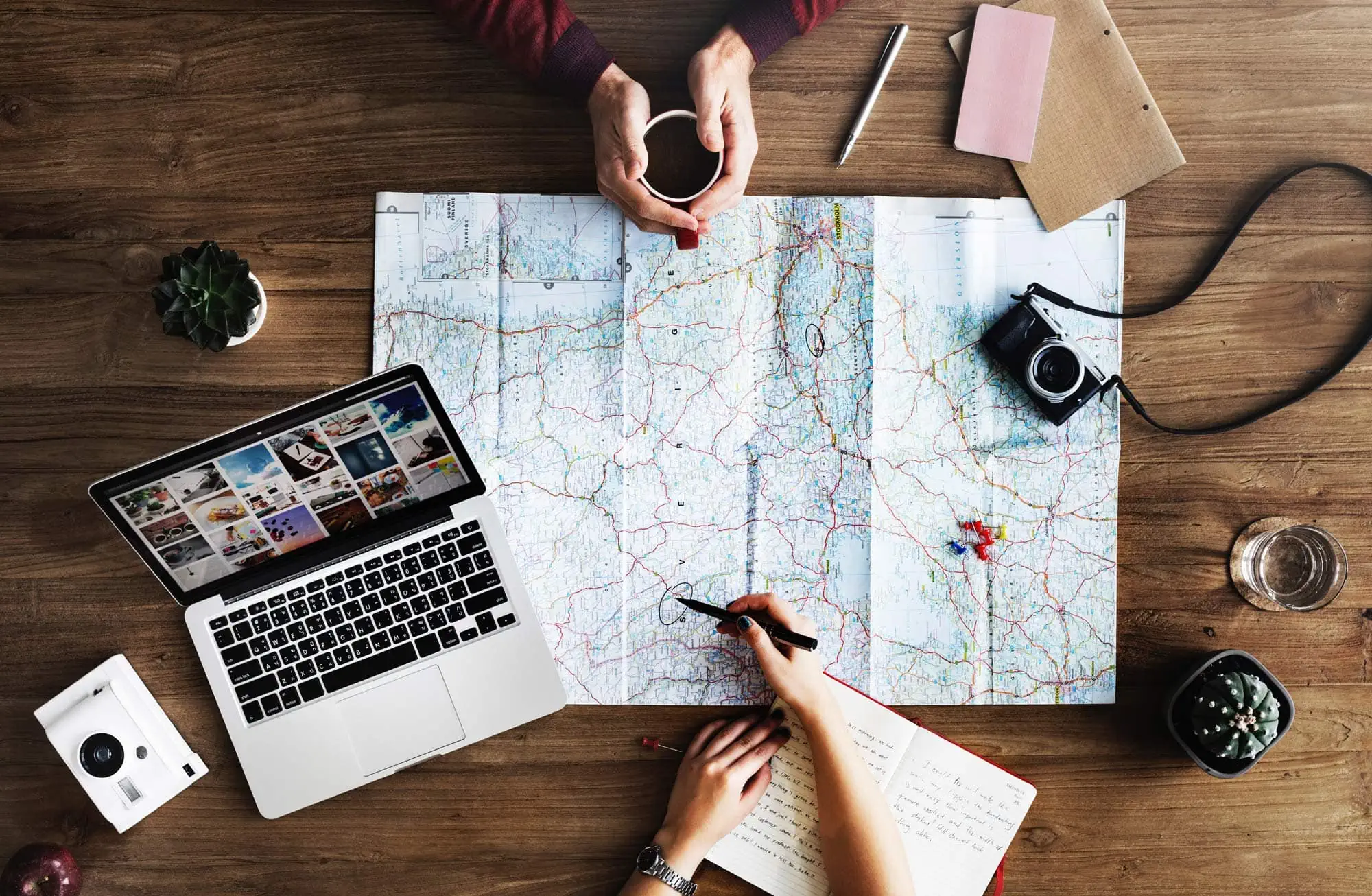How to maximize your next trip abroad
Planning a trip out of the country? You’ve booked your flight…now what? It’s hard to know where to begin, especially when traveling overseas. There is so much to do and see where you’re headed and it can be overwhelming to think about let alone plan in an organized way. Fear not! We want to share the steps that we take for each trip that will help you organize your planning most effectively.
From a high level, our process is based on two ideas. Using big landmarks to help you draw an outline for your time, and there is really no such thing a having too much on your list to do. There are specific reasons you chose to go to Tokyo, Paris or London, so what are they? Having your days planned out to the minute never works out the way you want it, but having a long list of restaurants, bars or shopping areas you know you want to visit can’t hurt. You won’t get to everything, but at least when you’re in an area there is always something on your list you’d like to do.
1. Planning your must-see attractions
So you know where you’re going! It’s time to consider what your must-haves are on your trip. You’ve likely chosen this destination for a reason, so what are the 3 – 5 must-see attractions to make your trip a success? The goal is to plan the rest of your trip around these landmarks.
On our first trip to Japan we knew we wanted to visit Tokyo and Kyoto, and had a few bucket list items to check off our list in each city. We knew we wanted to see the big Diabutsu in Kamakura and Fushimi Inari in Kyoto. Once you know what your must-sees are, it’s easy to start planning from there!
2. Research how long you actually need in a city or an area
Once you’ve narrowed down the cities or regions you plan to visit, it’s time to do a bit of research to see what else the area has to offer. Depending what your goals are for traveling, you might want to have a shorter or longer stay in any given area.
When we were planning our trip to Scotland, we wanted to make sure to see as much of the country as possible during our short stay. A quick web search of the top attractions in each city helped me understand how compact and walkable these small cities are. We decided that just two to three nights would be plenty to see the major sights and get a feel for each, but not feel like we seriously missed out. We were even able to tack on a guided day tour of the Scottish Highlands and still felt fulfilled from the trip.
It may help your planning to create a map of your must-see attractions and group them together by geographical area or neighborhood so you can immerse yourself in one neighborhood each day and you won’t find yourself running in circles around the city trying to see everything.
3. Start a custom Google map with pins of locations to visit
One of my favorite ways to plan for a trip to a new city is to create a custom map using Googles My Maps feature to get a sense of the geography around the city and the distance between the major attractions. It allows you to add your own pins for places you’d like to visit, and categorize and color code them so you can easily find them later. Our categories are often, major attractions, restaurants, bars, markets, coffee shops, and museums, so we’re never hungry, bored or thirsty without somewhere to go nearby! The maps will help you understand the distance between points, and map routes and learn if a destination is walkable or if a train or taxi is a better option.
It’s also helpful to add pins for major train stations, airports, or other meeting points near the areas you plan to visit. This makes it easy to open walking directions to any pinned location in a snap, rather than trying to remember the name or address of a site while you’re out exploring.

It’s easy to feel like this part of the process is never really complete, but you should feel ready to move on from this step when you think you have too much on your map to do or see in one stay. It’s okay to have too much on your list, but you don’t want to get caught with not enough to do!
4. Figure out where to stay
Once you’ve made your map with pins at your main points of interest in the city, you can use that to determine the best area to stay in. Again, this might be easier to determine in a smaller city like Glasgow where there are only a few neighborhoods to choose from. In larger cities like Tokyo where there are many major hubs it can be overwhelming to determine where to stay.
By looking at the concentration of pins you’ve added to your map, you can see where the best areas of the city to find accommodations might be. The closer you plan to stay to your pinned points of interest, the less time you’ll spend trekking to and from your hotel room to see the sights!
If you plan to use public transportation, make sure it’s within a short walk of your accommodation! If you’re renting a car, does your hotel or rental home have parking available? It’s important to research the area immediately surrounding your accommodation to ensure it has what you need. This could include a grocery store, pharmacy, coffee shop or restaurants nearby. Additionally, ensuring it’s a walkable and safe area is also an important step before booking!
5. Planning how to get around
When traveling to a new city, it’s important to consider the best way to get around. You don’t want to show up jetlagged, luggage in hand, and need to figure out how you’re going to get around.
We like to use public transportation and explore on foot as much as possible as it makes us feel more immersed in the unique culture around us. Some cities, like Washington D.C. are great for e-bike or scooter rentals which are another great way to get some exercise or just see the city from a different perspective. Doing the research to figure out what makes sense for the city you’re visiting is essential.
In larger cities where public transportation is ubiquitous, purchasing day or multi-day passes may be the most cost effective way of getting around. In New York for example, the metro is far and away the best way to experience the city. Cabs are expensive and traffic is…well traffic in New York. Also, the New York metro allows you to hop on and off with Apple Pay, Google Pay, and other e-pay solutions that allow you to travel without needing to go to the kiosk and purchase tickets or carry a metro card. London is the same, and will automatically cap your daily spend once a certain threshold has been hit. Cities in Scotland takes this a step further and will cap your weekly spend when using the same credit card for transit purchases.
If you plan to travel between major points of interest in a country or region, consider whether renting a car or finding a form of public transportation to make the trip is logical. For example, the Japan Rail Pass allows unlimited trips between major cities around Japan, whereas similar distances in the US will likely require a car rental. In some cases, a short flight might be economical between regions.
Just have fun planning!
It’s better to work with the mindset that you’re never done planning. You can never really have too much to see, ultimately you’ll just run out of time. But having too little on your list will mean you have to spend valuable time in your destination finding places to eat or things to do during the day. Think about it like this, if you were a kid and your mom said, “I’ll spend $100 dollars on your birthday presents, so tell me what you want”. Are you going to give her a list of things that cost $50? No, you’re going for $150 and seeing how far you get! Treat your vacation planning like this and you’ll never be disappointed, and you’ll have created your own unforgettable experience.





